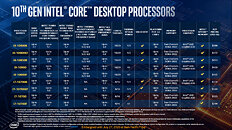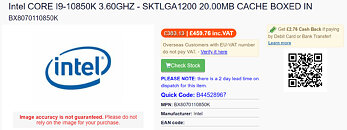
Could the Core i9-14900KS Successor be the Core Ultra 9 295K?
Intel's new Core Ultra processor model nomenclature is significantly different from the Core i7 series that held for 14 generations, since its 2008 debut. The desktop Core Ultra 2-series "Arrow Lake-S" desktop processor family is led by the Core Ultra 9 285K, which is positioned as a successor to the Core i9-14900K. The choice of numbering the top SKU "285K" instead of something like the "290K," which even caused the top Core Ultra 7 SKU to be numbered the "265K," raises a few questions. The biggest of these is if Intel is creating room for a near-future SKU to go with "295K."
In the classic Intel Core series nomenclature, the digit following the first two, designates a position in the product stack. For example, in the i9-14900K, "14" points to the processor generation, followed by "9" as the top-spec SKU. If you wind the clocks back to the 10th Gen Core "Comet Lake," there was a top-spec Core i9-10900K, but there was also a Core i9-10850K. Both the i9-10900K and the i9-10850K are unlocked 10-core/20-thread parts with identical TDP, set apart only by their stock clock speeds. Could it be possible that the Core Ultra 9 285K is a distant descendant of the i9-10850K, and that Intel's top "Arrow Lake-S" part is the "295K?" Momomo_us recently dug out an inconspicuous Intel Support webpage listing out Core Ultra desktop processors without an included fan-heatsink. This is very likely a typo, but the page mentions a "295K" SKU instead of the Core Ultra 9 285K. This caused us to wonder if the "295K" is being reserved for an i9-14900KS successor.
In the classic Intel Core series nomenclature, the digit following the first two, designates a position in the product stack. For example, in the i9-14900K, "14" points to the processor generation, followed by "9" as the top-spec SKU. If you wind the clocks back to the 10th Gen Core "Comet Lake," there was a top-spec Core i9-10900K, but there was also a Core i9-10850K. Both the i9-10900K and the i9-10850K are unlocked 10-core/20-thread parts with identical TDP, set apart only by their stock clock speeds. Could it be possible that the Core Ultra 9 285K is a distant descendant of the i9-10850K, and that Intel's top "Arrow Lake-S" part is the "295K?" Momomo_us recently dug out an inconspicuous Intel Support webpage listing out Core Ultra desktop processors without an included fan-heatsink. This is very likely a typo, but the page mentions a "295K" SKU instead of the Core Ultra 9 285K. This caused us to wonder if the "295K" is being reserved for an i9-14900KS successor.






